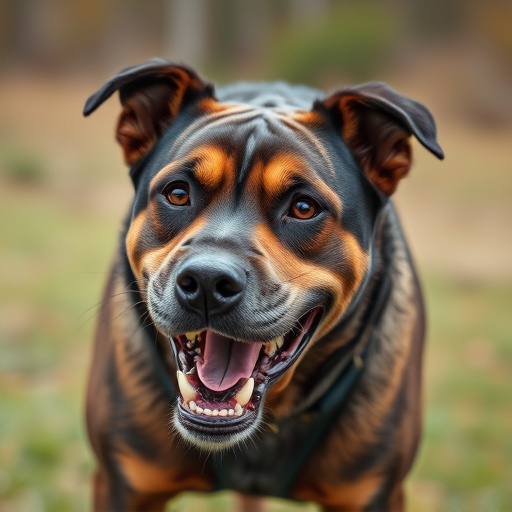Dog aggression requires understanding triggers like fear or territoriality. Pepper spray, used responsibly at a safe distance (7-8 feet), can deter aggression without causing severe harm. Dog-specific pepper spray has a short to moderate range (3-10 meters) and should be aimed at face or eyes. Wind conditions must be considered for optimal effectiveness. In a dog attack, maintain 3-4 meter safe spraying distance; target face and eyes temporarily neutralizing the animal. After use, seek immediate medical attention, wash thoroughly, and monitor for adverse reactions.
“Dog attacks can be terrifying experiences, but arming yourself with knowledge and the right tools can make a significant difference. This guide explores an innovative solution: pepper spray designed for dog attacks. We delve into understanding canine aggression and the safety aspects of using pepper spray, emphasizing the crucial factor of safe spraying distance for dogs.
Learn about effective application techniques and essential post-treatment care, ensuring you’re prepared to handle potential encounters confidently and safely.”
- Understanding Dog Aggression and Pepper Spray Safety
- Key Factors to Consider for Safe Spraying Distance
- Effective Use and Post-Treatment Care for Dog Attacks
Understanding Dog Aggression and Pepper Spray Safety
Dog aggression can arise from various factors, such as fear, territorial behavior, or even excitement. Understanding these triggers is crucial when considering the use of pepper spray as a deterrent. It’s important to remember that spraying dogs should always be a last resort, and it’s essential to maintain a safe distance for both yourself and the animal. The recommended Safe Spraying Distance for Dogs is typically around 7-8 feet (2-2.5 meters), allowing you to deploy the spray effectively while keeping a safe barrier between you and the dog.
When using pepper spray, it’s vital to choose products designed specifically for animal control, ensuring they meet safety standards. Proper application techniques, such as aiming towards the face and eyes, can enhance its effectiveness without causing severe harm. Remember, the goal is not to inflict pain but to temporarily incapacitate or deter an aggressive dog, giving you time to retreat or seek help.
Key Factors to Consider for Safe Spraying Distance
When considering the safe spraying distance for dogs, several key factors come into play to ensure effectiveness and avoid harm. The primary consideration is understanding the spray’s range and accuracy. Pepper spray designed for dog deterrence typically has a short to moderate range, usually between 3 to 10 meters (10-33 feet), depending on the product. This means it’s crucial to aim for the face or eyes, as these areas are most sensitive, within this range.
Another factor is the wind’s direction and strength. Spraying against the wind can reduce the effective distance, while spraying with the wind can carry the spray further, potentially affecting bystanders or other animals. It’s essential to choose a location where you can control or anticipate wind conditions to ensure safe spraying without causing unintended consequences.
Effective Use and Post-Treatment Care for Dog Attacks
When using pepper spray to stop a dog attack, understanding the safe spraying distance is crucial. It’s recommended to keep a distance of 3 to 4 meters (10-13 feet) from the attacking dog. At this range, you can spray directly towards their face and eyes, temporarily blinding and disorienting them, giving you time to retreat or defend yourself. Remember, pepper spray is most effective when used at close range, but it’s important to maintain enough space to avoid any direct contact with the spray.
After the initial use, post-treatment care is essential. If possible, seek immediate medical attention, as dog attacks can cause severe injuries. Wash the affected area thoroughly with water and mild soap, especially around the eyes, nose, and mouth, to prevent further irritation or damage. Keep an eye out for any signs of infection or adverse reactions to the spray. Have a spare bottle of de-sprayer on hand, as some dogs may remain aggressive despite being sprayed.
When faced with a dog attack, knowing how and when to use pepper spray as a last resort can be crucial. Understanding dog aggression and practicing safe spraying distance techniques are key to effective self-defense. Always assess the situation, consider your options, and remember that prevention is the best strategy. By being prepared and understanding the proper application technique, you can enhance your safety when encountering aggressive dogs. Maintain a safe spraying distance, act swiftly, and provide prompt post-treatment care for the best outcomes.
